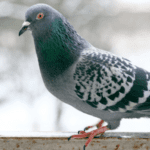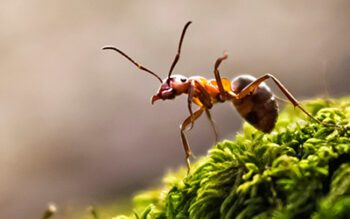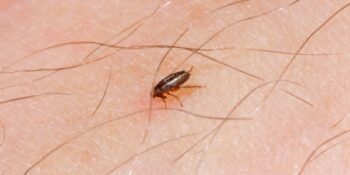
Even though they’re closely related to beloved butterflies, most Long Island homeowners would probably argue moths are much more of a nuisance than a beautiful insect.
On Long Island alone, there are MULTIPLE species of moths that plague pantries, kitchens, and closets, among other spots in the home.
Despite their reputation as a common household pest, there are a number of fun facts about moths that may allow you to see these lamp-loving pests in a new “light.” Here are 10 of our favorite moth facts.
Moth Fact #1: There Are More Moth Species Than Butterfly Species in the World
Did you know moths and butterflies are in the same insect Order, Lepidoptera? There are actually over 160,000 different species of moths in the world, compared to only 17,500 species of butterflies! In the United States, there are over 10,000 moth species, and on Long Island, we see four key species, including: Casemaking Clothes Moths, Grain Moths, Indian Meal Moths, and Webbing Clothes Moths.
Moth Fact #2: Moths Undergo Complete Metamorphosis
You likely have heard about the metamorphosis butterflies go through, but moths also go through a complete transition with four distinct stages—egg, larva, pupa, and adult.
Moth Fact #3: Giant Silk Moths Don’t Have Functioning Mouth Parts
The largest moth known to the state of New York is the Cecropia. Measuring in at around 6 inches from wingtip to wingtip, this particular species of moth is considered a GIant Silk Moth. This group of moths, weirdly enough, doesn’t have functioning mouthparts, meaning they don’t eat! Instead, they subsist off of the fatty reserves they accumulated in their larva stage.
Moth Fact #4: Moths Have Scales Covering Their Wings
Scales aren’t just for aquatic creatures like fish. Moths, too, have scales covering their wings, which can aid in flight, attracting mates, and deterring predators.
Moth Fact #5: There’s a Word for Tiny Moths
There are thousands of species of very small moths, including the Clothes Moth, which fall into the category of Microlepidoptera. These moths usually have wingspans under 20mm and can be difficult to identify because of their tiny size.
Moth Fact #6: Moths Are Known to Migrate
You may have heard about the magnificent migration made by Monarch Butterflies each year, but many species of moths are known for migrating, too! For example, the Hummingbird Hawkmoth migrates from Southern to Northern Europe each summer when temperatures rise.
Moth Fact #7: Moths Are Known for Their Impersonations
Some moth species, in an effort to ward off predators, have evolved to look like wasps, tarantulas, and the praying mantis. Strangely enough, some moths can even pretend to look like bird droppings for self-preservation.
Moth Fact #8: Moths’ Antennae Vary From Butterflies’
Despite their similarities, moths vary from butterflies in their antennae. While butterflies have club-tipped antennae, moths’ antennae are more thread-like.
Moth Fact #9: Moths Will Munch on Your Clothes
As mentioned, Casemaking Clothes Moths are one of the most common moth species Long Island homeowners deal with. These moths will cause damage to natural fabrics like furs, clothing, wool carpets, and curtains.
Moth Fact #10: Some Moth Species Live Only a Few Days
While some moths may live weeks or months, many adult species like the Casemaking Clothes Moth only live for a few days to a week!
Dealing With Moths? Call Suburban Exterminating!
Even the most interesting pests can still cause issues in your Long Island home. Moths, in particular, are known to contaminate dry goods in pantries and damage the fabrics of your clothes.
If you’re dealing with a moth problem, our team can help! Call or text (631/516) 864-6900 for a free estimate.





